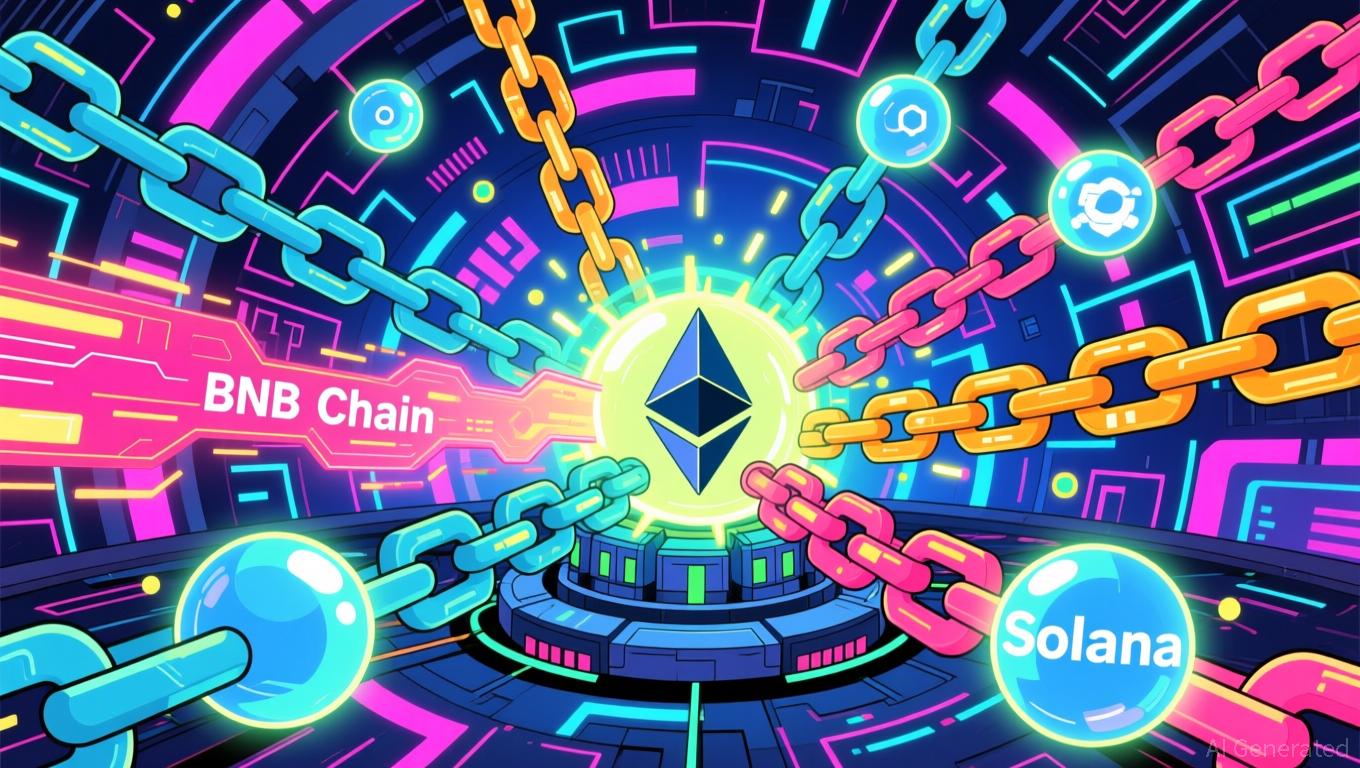DeFi’s Structural Vulnerabilities Revealed by $60 Million XPL Turmoil
- Hyperliquid's whale wallet 0xb9c earned $614K in unrealized XPL profits after a 200% price surge orchestrated by four manipulators, generating $47.5M combined gains. - The manipulation exploited isolated oracles and no position limits, triggering $60M+ losses and exposing Hyperliquid's lack of circuit breakers or external price references. - Post-incident safeguards like 10x mark price caps and external data integration created arbitrage opportunities, highlighting systemic risks in DeFi's growth-over-se

The whale wallet 0xb9c currently holds the largest XPL long position on Hyperliquid, amassing an unrealized gain of $614,000 as of August 27, 2025. This follows a coordinated price manipulation event that caused the token’s value to soar by 200% to $1.80 in a matter of minutes. Four major whale wallets orchestrated this rapid price increase, collectively earning $47.5 million, with 0xb9c alone pocketing over $15 million as the main orchestrator. By exploiting Hyperliquid’s isolated oracle mechanism and absence of position caps, the manipulators triggered a wave of forced liquidations, resulting in losses exceeding $60 million for other participants.
XPL, the native asset of the Plasma blockchain, experienced this price manipulation through leveraged trades that wiped out the order book and forced shorts to close. Hyperliquid users, including one who suffered a $4.59 million loss, criticized the platform for lacking essential protections like circuit breakers and external price feeds, which are common on centralized exchanges. In response, Hyperliquid implemented a 10x ceiling on mark prices based on an 8-hour moving average and began using external market data to prevent similar incidents. However, these changes led to arbitrage opportunities, as XPL’s price began to diverge between platforms such as Binance and Hyperliquid.
This episode highlights the inherent risks in DeFi platforms that prioritize rapid expansion over robust risk controls. By listing tokens with limited liquidity like XPL, Hyperliquid exposed itself to market manipulation by large holders. Experts pointed out that, unlike centralized exchanges that use open interest limits and external price oracles to stabilize trading, Hyperliquid lacked governance structures to counteract manipulation. The situation has reignited discussions about the necessity of position limits, transparent oracle systems, and regulatory frameworks within DeFi markets.
The XPL incident is not unique; similar cases, such as the $13.5 million JELLY token exploit in March 2025, demonstrate recurring vulnerabilities in leveraged DeFi markets. Both traders and analysts stress the importance of recognizing the distinct risks present in pre-launch perpetual futures, where low liquidity and fast trade execution can intensify price swings. Although Hyperliquid’s 2023 debut established it as a prominent on-chain futures platform, recent developments underscore the ongoing struggle to balance innovation with security in decentralized finance.
Following the manipulation, XPL’s price has dropped back to $0.51, reflecting a correction after the surge. Nevertheless, this event has brought renewed focus to the need for industry-wide reforms, such as enhanced risk management systems and standardized measures to deter manipulation. As DeFi continues to grow, maintaining equilibrium between scalability and security will remain a central concern for developers, regulators, and market participants.
Disclaimer: The content of this article solely reflects the author's opinion and does not represent the platform in any capacity. This article is not intended to serve as a reference for making investment decisions.
You may also like
Ethereum News Update: Avail’s Nexus Bridges Liquidity Across 12 Blockchains, Tackling Fragmentation
- Avail's Nexus Mainnet launches as a cross-chain execution layer unifying liquidity across 12 blockchains including Ethereum and BNB Chain. - The intent-solver architecture automates optimal routing while aggregating liquidity from multiple chains through Avail's data availability layer. - Developers gain simplified cross-chain integration via SDKs and APIs, enabling real-time collateral pools and intent-based trading without managing bridges. - With Solana integration planned and Infinity Blocks roadmap

Ethereum News Update: Ethereum Drives Institutional Transformation with Amundi Tokenizing Major Fund
- Amundi tokenizes a money market fund on Ethereum , signaling institutional adoption of blockchain-based asset management. - Ethereum's upgrades like PeerDAS and Bhutan's $970k ETH staking highlight growing institutional trust in its infrastructure. - CoinShares' $250M Bitcoin Miners ETF and global digital ID initiatives underscore tokenization's role in modernizing finance. - Ethereum's $3,100 price resistance and technical indicators suggest potential for long-term resilience amid scaling improvements.

Hyperliquid News Today: Hyperliquid Adopts Tidewater’s Strategy to Streamline Crypto Risk Management
- Hyperliquid introduces automated downsizing to stabilize HYPE, which dropped 52% from its peak. - Strategy mirrors Tidewater Renewables' capacity management, balancing short-term volatility with long-term stability. - Hyperliquid Strategies DAT plans $300M HYPE buybacks to inject liquidity and institutional-grade risk frameworks. - Market faces $1.89B+ liquidation risks if Bitcoin/Ethereum surge, prompting automated buffers to prevent cascading sell-offs. - Approach reflects growing DeFi adoption of algo
The Unexpected COAI Price Decline: Key Lessons for Investors from the November 2025 Market Turbulence
- COAI Index's 88% November 2025 collapse stemmed from C3.ai governance failures, regulatory ambiguity, and panic-driven herd behavior. - Market psychology amplified losses as investors overreacted to AI sector risks, ignoring fundamentals and triggering liquidity crises. - Diversification, cash reserves, and AI-driven tools helped mitigate risks, emphasizing long-term strategies over speculative hype. - The crisis exposed dangers of overreliance on AI/DeFi narratives, urging disciplined, diversified portf
